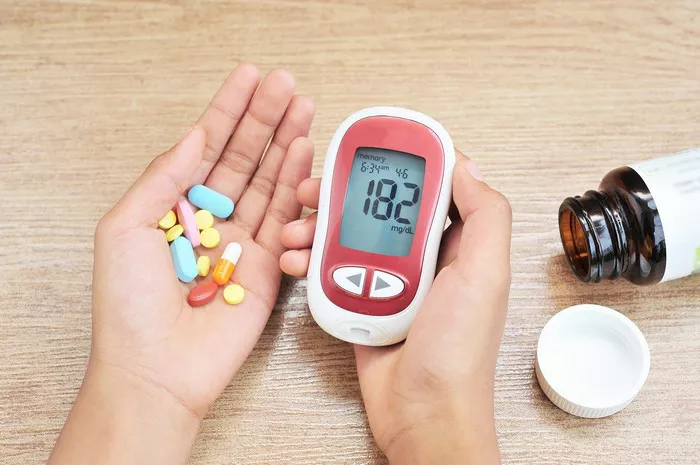Insulin resistance is a condition in which the body’s cells become less responsive to the hormone insulin, leading to higher levels of glucose in the blood. This condition is a precursor to type 2 diabetes and is linked to various other health issues, including cardiovascular disease and metabolic syndrome. Addressing insulin resistance effectively is crucial for preventing the progression to diabetes and improving overall health. This article explores the time frame required to manage and potentially reverse insulin resistance, examining factors influencing recovery, therapeutic strategies, and expected outcomes.
Understanding Insulin Resistance
To address how long it takes to fix insulin resistance, it is essential first to understand what insulin resistance entails. Insulin is a hormone produced by the pancreas that helps cells absorb glucose from the bloodstream. In insulin resistance, the cells do not respond to insulin as effectively, resulting in elevated blood glucose levels.
Over time, this condition forces the pancreas to produce more insulin to compensate, which can lead to pancreatic beta-cell dysfunction and the development of type 2 diabetes. Insulin resistance is often associated with obesity, physical inactivity, poor diet, and genetic predisposition.
Factors Influencing the Time Frame for Reversing Insulin Resistance
Several factors influence how long it takes to fix insulin resistance:
Severity of Insulin Resistance: The degree of insulin resistance affects the time required for improvement. Mild insulin resistance might respond more quickly to lifestyle changes, whereas severe cases may require a more prolonged period and comprehensive intervention.
Individual Health Status: An individual’s overall health, including the presence of other conditions such as hypertension or dyslipidemia, can impact recovery time. Additionally, factors such as age, sex, and genetic background play a role.
Lifestyle Modifications: Changes in diet, physical activity, and weight management are critical. Adherence to these modifications can significantly influence the speed of recovery.
Medication and Medical Management: Some individuals may need medications to improve insulin sensitivity. The effectiveness and response to these treatments can vary, affecting the duration of insulin resistance management.
Consistency and Commitment: Consistency in lifestyle changes and adherence to medical recommendations are crucial for improving insulin sensitivity and achieving long-term success.
Strategies for Managing Insulin Resistance
Managing insulin resistance typically involves a combination of lifestyle modifications, medical treatments, and regular monitoring. The primary strategies include:
Dietary Changes:
Balanced Diet: A diet rich in whole grains, lean proteins, healthy fats, and vegetables is recommended. Reducing intake of refined carbohydrates and sugars can help lower blood glucose levels.
Portion Control: Eating smaller, more frequent meals can help maintain stable blood sugar levels.
Low Glycemic Index Foods: Foods that have a low glycemic index help reduce post-meal blood sugar spikes.
Physical Activity:
Regular Exercise: Engaging in moderate to vigorous physical activity, such as brisk walking, jogging, or strength training, improves insulin sensitivity. Aim for at least 150 minutes of moderate exercise per week.
Consistency: Regular exercise helps maintain weight and improve insulin sensitivity over time.
Weight Management:
Healthy Weight Loss: Losing excess weight, especially visceral fat, can significantly improve insulin sensitivity. A weight loss of as little as 5-10% of body weight can have beneficial effects.
Medications:
Metformin: Often prescribed as the first-line treatment for type 2 diabetes, metformin can also be used to improve insulin sensitivity in individuals with insulin resistance.
Other Medications: Depending on individual needs, other medications such as thiazolidinediones or GLP-1 receptor agonists may be considered.
Monitoring and Regular Check-ups:
Blood Glucose Monitoring: Regular monitoring of blood glucose levels helps track progress and make necessary adjustments to treatment.
Healthcare Visits: Regular consultations with a healthcare provider ensure that the management plan is effective and adjusted as needed.
Expected Time Frame for Improvement
The time frame for improving insulin resistance varies widely among individuals. Here is a general outline of what one might expect:
Short-Term (Weeks to Months):
Initial Changes: With immediate changes in diet and physical activity, improvements in blood glucose levels and insulin sensitivity can be observed within a few weeks to months.
Weight Loss: Early weight loss, if part of the strategy, often shows noticeable improvements in insulin sensitivity.
Medium-Term (3 to 6 Months):
Sustained Improvement: Consistent adherence to lifestyle changes and medications can lead to more significant improvements in insulin sensitivity. This period often shows more pronounced reductions in blood glucose levels and better overall metabolic health.
Long-Term (6 Months to 1 Year or More):
Ongoing Management: Long-term success in reversing insulin resistance requires continued adherence to lifestyle changes and regular monitoring. Over time, many individuals can achieve normalized blood glucose levels and improved insulin sensitivity.
Chronic Management:
Maintenance: For some, insulin resistance might be a chronic condition requiring ongoing management to maintain improvements and prevent relapse. This involves continued lifestyle modifications and, if necessary, medication.
Challenges and Considerations
While many individuals experience significant improvements, there are challenges and considerations to keep in mind:
Plateaus: Some individuals may experience plateaus in their progress, requiring adjustments to their management plan.
Relapse Risk: Without sustained lifestyle changes, there is a risk of returning to insulin resistance, particularly if weight is regained or physical activity decreases.
Comorbid Conditions: The presence of other health conditions can complicate the management of insulin resistance and may require additional interventions.
See also: What Does Insulin Resistance Do?
Conclusion
The time it takes to fix insulin resistance varies based on numerous factors, including the severity of the condition, individual health status, and adherence to lifestyle modifications and medical treatments. While improvements can often be seen within weeks to months with effective changes, long-term management and consistency are essential for sustained success. Addressing insulin resistance involves a comprehensive approach, including dietary changes, physical activity, weight management, and, if necessary, medication. Regular monitoring and commitment to the management plan are key to achieving and maintaining improved insulin sensitivity and overall health.
By understanding the factors influencing the time frame and adopting a holistic approach to management, individuals can work towards reversing insulin resistance and enhancing their well-being.
Related topics:
How Insulin Resistance Affects Blood Sugar Levels
























